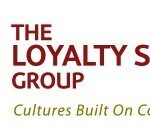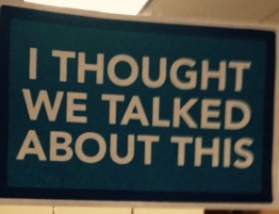
Seattle’s Community Festival Culture
April 7, 2015
Strategy or Culture – Which Would You Rather Have?
May 9, 2015SEATTLE LEADS THE NEXT HUMAN RESOURCE REVOLUTION
REVOLUTION – A fundamental change in Organizational Structures that takes place in a relatively short period of time.
In the mid 80’s Robert Spector published a book called the “NORDSTROM WAY” which launched a Customer Service revolution across America. Seattle became synonymous with customer service and Human Resource departments across the country were charged to improve the level of service for both their customers and employees.
With the signing of the free trade agreements around the world, the priority for organizations became Continuous Improvement – which focused on cutting expenses – and the objective was the focus on “Cheapest”. This Human Resource Revolution was driven by outside consultants – My favorite being “Six Sigma”, Karate for expense control.
Today Seattle is back in the leadership role for the next Human Resource Revolution. The next 20 years will be focused on “Being the Smartest”. There is a projection that in the next 10 years 75% of our current technology will be obsolete, and the Millennials are the driving employee base. The Human Resource Departments will now be focused on Innovative working environments-Collaborative working cultures and Hiring and Retaining the brightest employees. Seattle is the epicenter for this next Human Resource Revolution.
In the mid 80’s Customer Service was not a core value in the world of retail. The Baby Boomers were just starting to get married and raising families, and our consumer society was moving forward at light speed. Robert Spector had just published a book titled “THE NORDSTROM WAY”, which was a run-a-way success. This was Seattle’s first national Human Resource revolution. Within a few months, the entire retail community was talking about Customer Service as a new core element that needed to be a part of the retail environment.
I had worked for the Bon Marche [now Macy’s] for about 10 years and had left to open my own restaurant. After 4 years I decided to return to working for someone else and was re-hired as the director of training and internal communications at the Bon. My sole focus was to change our retail culture from a clerk and audit environment, to a sales and customer friendly environment as defined by two core values:
“Customer Service from the Heart” and “I Guarantee It”
There I was, in charge of a culture change for 5000 employees. I was also charged with creating a greater sense of teamwork in each of the 40 operating units. These two great projects were accomplished with 1980’s management concepts and no e-mail technology.
We will start with the Customer Service effort. As in the 1970’s and 1980’s, there are six ways a retail store can differentiate or position itself – Price, Value, Quality, Selection, Service, and Cool. It wasn’t until Nordstrom got a major amount of press on its return policy (the story of how Nordstrom took back car tires) that the nation started paying attention to Customer Service. The book defined this new awareness about the Loyalty factor of Customer Service, and the retailers, and eventually all organizations, became engaged in adding Customer Service to the management focus.
“Customer Service from the Heart” is about an attitude, and asking 5,000 sales people to have this attitude was a great starting point – but, in the world of retail, company policies, and managers’ behaviors have the major impact on someone’s attitude. So, the first thing that had to change was the company’s Return Policy. You see, to return something to The Bon Marche’ in 1983, a sales associate would have to get a department manager to sign the return credit and then the customer would have to walk to the cash office to get their $$ back. So much for customer service and good attitudes. On top of this return policy, the company had a very strong “security” attitude – which means the inventory was closely checked at least 2 times per year and departments that had excess inventory shrinkage would be given extra management oversight. Again – not good for customer service or service attitudes. So, this “protect the merchandise” and “make it hard to return” mindset was a problem for SERVICE FROM THE HEART. How could you compete with Nordstrom (who took back car tires) when our customers had to go to the cash office with two signatures to get their $$ back?
This became the birth of the “I Guarantee It” cultural change – first, every sales person now would have the power to take back the merchandise, and we changed our “clerk” title to “associate”. So, all of a sudden, we told the organization it was “Customer Service from the Heart”, you are now an Associate, and each of you has the power to deal with your customers without a management signature. Wow! What a shift – and, for the first 9 months no one believed it was true. There were still inventories and security and, while a few wanted to believe, there was this wait-and-see approach – “I don’t want to be the first to screw up”.
The major point here is that I worked for the VP of Human Resources and this service initiative was the most important initiative that the company paid attention to – Human Resources was not only sitting at the Senior Management meetings, we were driving the most important cultural change in the retail business; this focus was the number one initiative in all of retail across the country.
THIS WAS SEATTLE’S FIRST HUMAN RESOURCE REVOLUTION
Starting with the United States signing the free trade agreement, accompanied with Baby Boomers now entering a more crowded retail environment, the business culture started moving toward a Continuous Improvement Focus. Since our overall business environment was production, which focuses on “What you do” and “How you can do it better”, we were not about new initiatives – we became committed to cheap.
Profitability was more tied to cutting costs than growing sales. This focus put the Human Resource community into the role of budget managers. Business re-defined the need for middle managers; when you are cost cutting, you need the front line employees, and there is no way you would lessen the senior management team, so that only leaves middle management. Companies started talking about “Horizontal Management” structures, which was code for removing a layer of middle management. The code words were Continuous Improvement and Minimum Staffing Levels. Toyota University made this an art form, “Six Sigma” with its karate language and promise to deliver “Process Improvement” and a “Continuous Improvement Culture Change”, were all delivered without looking at the Impact on the front line employees and the stress on middle management. This Human Resource Revolution was driven by the outside consulting world, and Human Resources took on the effort to manage the fallout of these processes, and the legal implications of decision being made without any human value balance.
THIS WAS THE SECOND HUMAN RESOURCE REVOLUTION
SO WHAT HAS CHANGED?
Over the last 7 years leaps in technology have created a new and somewhat stressful business environment. The elements that were driving the past 30 years are now no longer in play. The pace of change is frightening, and we are in a period of Disruption [Events which cause an unplanned deviation from the expected outcomes].
In this new world, technology advances are everywhere. The way we drive a car or buy a car or need a car, the way we watch TV, the world of social media, and everyone having a video camera – Every part of the society is experiencing disruptions. Also, the consumer environment is totally being disrupted: over 50% of retail is online, The Baby Boomers are done buying and are just starting to downsize. The Millennials are not consuming – they are viewing the world totally differently than past generations.
Thomas Friedman had an editorial that quoted Antoine Van Agrmael [who is a futurist] “The last 25 years was about who could make things the cheapest. The next 25 years will be all about who can make things the smartest”
The current REVOLUTION is now about Smart, not cheap.
SEATTLE IS LEADING THE NEXT HUMAN RESOURCE REVOLUTION
Human resource professionals are now leading the conversation about how to recruit, as well as retain, the best and the brightest.
Seattle has taken a revolutionary step of going to a $15 minimum wage.
The CEO of Gravity Payments, Dan Price has announced that he will pay his employees a minimum annual salary of $70,000.
Costco has lead the wage war, by paying a decent wage to its employees and by training and promoting from within.
Amazon has decided to locate and build its entire campus in the middle of Seattle knowing that the majority of its work force will be Millennials, who would much rather live in the city than in a suburb.
Facebook has announced the leasing of enough space to house 2000 employees, in the same area as Amazon’s campus.
Expedia is moving from Bellevue to Seattle in the empty Amgen Campus, promising to create the best working environment in the world.
The list goes on but the message is: the Human Resource professionals are now focused on attracting and keeping the best and the brightest, and there is a gathering of what will amount to the revolution of organizational culture change -not limited to “where you live” and the “space you work in”, this will also lead to redefining the culture – moving from cheap production, to winning through creating smarter processes, useful gadgets, more collaborative working cultures, and more focus on employee loyalty.
THIS IS SEATTLE’S SECOND HUMAN RESOURCE REVOLUTION
IN THE LAST 35 YEARS





